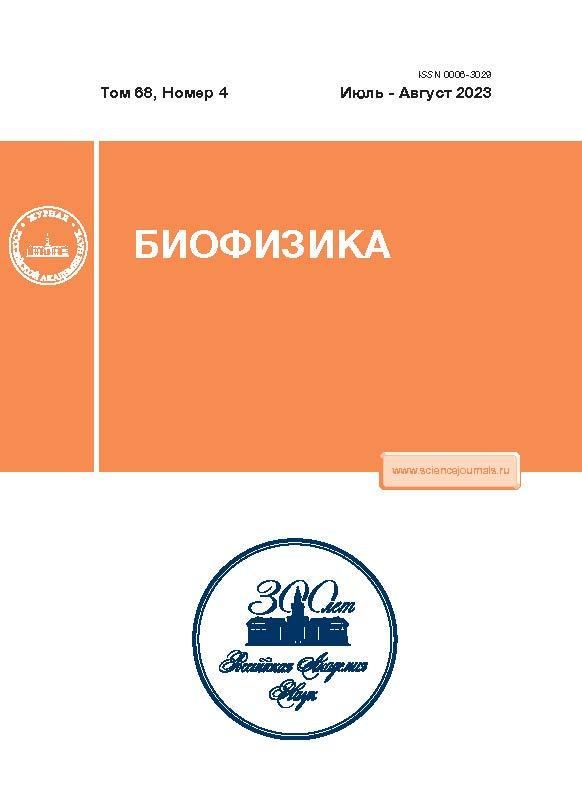Bioluminescence of ctenophore Pleurobrachia pileus (O.F. Muller, 1776) in the summer period
- Autores: Temnykh A.V1, Silakov M.I1, Mashukova O.V1
-
Afiliações:
- A.O. Kovalevsky Institute of Biology of the Southern Seas, Russian Academy of Sciences
- Edição: Volume 68, Nº 4 (2023)
- Páginas: 736-747
- Seção: Articles
- URL: https://cardiosomatics.ru/0006-3029/article/view/673415
- DOI: https://doi.org/10.31857/S0006302923040142
- EDN: https://elibrary.ru/KMUHYX
- ID: 673415
Citar
Texto integral
Resumo
The capability of bioluminescence has been found in many marine hydrobionts, including almost all representatives of the phylum Ctenophora. The glow of species and bioluminescent substrates isolated from them is actively used in biology, ecology, and medicine to study the physiological state of an organism or to identify unfavorable environmental parameters. The parameters of luminescence of the Black Sea ctenophores Mne-miopsis leidyi A. Agassiz, 1865 (Lobata) and Berce ovata Bruguicre, 1789 (Beroida) are used to study the effects of toxicants, such as liquid hydrocarbons, PCBs, and heavy metals. Some researchers casted doubt on the capability of the Black Sea autochthonous inhabitant, ctenophore Pleurobrachia pileus (O. F Muller, 1776) to produce bioluminescent light. The objective of this work was to ensure scientific support for the light-producing ability of species under study and to choose the optimal time for conducting experiments on the factors that affect bioluminescence. It was found that mechanical and chemical stimulation triggered a bioluminescent response in all size groups of species under study at any time of day. Upon chemical stimulation of the studied species, the signal energy value was several times greater than that observed after mechanical stimulation. It was revealed that the optimal time interval for conducting biophysical research is the time from 8 pm to 6 am, because the values of luminescence activity are the greatest in this time interval within a day.
Palavras-chave
Sobre autores
A. Temnykh
A.O. Kovalevsky Institute of Biology of the Southern Seas, Russian Academy of Sciences
Email: atemnykh@yandex.ru
Sevastopol, Russia
M. Silakov
A.O. Kovalevsky Institute of Biology of the Southern Seas, Russian Academy of Sciences
Email: atemnykh@yandex.ru
Sevastopol, Russia
O. Mashukova
A.O. Kovalevsky Institute of Biology of the Southern Seas, Russian Academy of Sciences
Autor responsável pela correspondência
Email: atemnykh@yandex.ru
Sevastopol, Russia
Bibliografia
- А. И. Журавлев, В. А. Веселовский и Н. Н. Кощеенко, Труды МОИП, 21, 19 (1965).
- S. H. D. Haddock, M. A. Moline, and J. F. Case, Annu. Rev. Mar. Sci., 2 (1), 443 (2010).
- J. G. Morin, Bull. Marine Sci., 33 (4), 787 (1983).
- Ю. Н. Токарев, Основы биофизической экологии гидробионтов (ЭКОСИ-Гидрофизика, Севастополь, 2006).
- O. Shimomura, Bioluminescence: chemical principles and method (World Scientific, 2012).
- S. H. D. Haddock and J. F. Case, Marine Biol., 133, 571 (1999).
- Э. П. Битюков, В. И. Василенко, И. М. Серикова и др., Экология моря, 46, 19 (1996).
- W. E. Esaias and H. C. Curl, Limnol. Oceanogr., 17 (6), 901 (1972).
- С. А. Пионтковский и С. А. Серегин, Поведение копепод (ЭКОСИ-Гидрофизика, Севастополь, 2006).
- В. Б. Цейтлин и Ю. А. Рудяков, Докл. АН СССР, 38 (4), 978 (1989).
- E. Pennisi, Science, 235 (3), 1060 (2012).
- П. В. Евстигнеев, в сб. Биологические ресурсы водоемов в условиях антропогенного воздействия (Наук. думка, Киев, 1985), сс. 29-31.
- Э. П. Битюков, П. В. Евстигнеев и Ю. Н. Токарев, Гидробиол. журн., 29 (4), 27 (1993).
- Ю. Н. Токарев, П. В. Евстигнеев и О. В. Машукова, Планктонные биолюминесценты Мирового океана: видовое разнообразие, характеристики светоизлучения в норме и при антропогенном воздействии (Нижняя Ореанда, Симферополь, 2016).
- P. B. Tett, J. Mar. Boil. Ass. UK, 49 (1), 245 (1969).
- Ю. Н. Токарев, Дис. … канд. биол. наук (ИнБЮМ,Севастополь, 1990).
- Э. П. Битюков, Зоол. журн., 47(1), 36 (1968).
- И. И. Гительзон, Л. А. Левин, Р. Н. Утюшев и др., Биолюминесценция океана (Гидрометеоиздат, СПб., 1992).
- П. В. Евстигнеев и Э. П. Битюков, Экология моря, 24, 87 (1986).
- О. В. Машукова, Экология моря, 79, 15 (2009).
- О. В. Машукова, в сб. Экологические проблемы Азово-Черноморского региона и комплексное управление прибрежной зоной: Материалы молодежной научнопрактической конференции (ЭКОСИ-Гидрофизика, Севастополь, 2014), сс. 89-94.
- П.В. Евстигнеев, Экология моря 42, 31 (1992).
- E. N. Harvey, Bioluminescence (Acad. Press, N.-Y., 1952).
- Ю. Н. Токарев, О. В. Машукова и В. И. Василенко, Экология моря, 76, 61 (2008).
- Yu. N. Tokarev and O. V. Mashukova, Luminescence, 14, 351 (2016).
- O. Mashukova, Y. Tokarev, and E. Skuratovskaya, Ecol. Montenegrina, 14, 109 (2017).
- О. В. Машукова и М. И. Силаков, Труды Карадагской научной станции им. Т. И. Вяземского - природного заповедника РАН, 4 (16), 58 (2020).
- О. В. Машукова, М. И. Силаков, Л. В. Малахова и др., Системы контроля окружающей среды, 3 (45), 39 (2021).
- S. H. D. Haddock and J. F. Case, Biol. Bull., 189 (3), 356 (1995).
- О. В. Машукова, Вестн. Прикаспия, 3 (22), 15 (2018).
- E. Mutlu and F. Bingel, Marine Biol., 135, 589 (1999).
- М. Е. Виноградов, М. В. Флинт и Э. А. Шушкина, в сб. Современное состояние экосистемы Черного моря (Наука, М., 1987), сс. 172-186.
Arquivos suplementares










